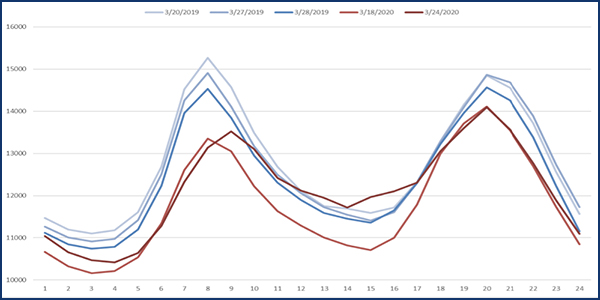By Michael Kuser
ISO-NE CEO Gordon van Welie said that the RTO activated emergency operation procedures to counter the COVID-19 pandemic on March 12 and that “it’s been really gratifying to see how smoothly the transition went.”
“We have all these contingency plans, emergency plans, and have experimented with half the workforce working from home, but we never had to implement them for real before now,” van Welie told the New England Power Pool Participants Committee on Thursday.
The RTO has more than 95% of its workforce now working remotely, with remote deployment to continue through at least May 4, and is taking special care for the health of crews for the two control centers, ISO-NE COO Vamsi Chadalavada said.
“The industry has really come together in a very refreshing and collaborative way,” he said. “I think folks have closed ranks; there’s a lot of cooperation; and best practices are being shared in near real time. There are extensive communication protocols across the country and internationally.”
The Electric Power Research Institute has been hosting sessions, and the RTO conducts its own conference calls with generators and every key link in the supply chain to ensure reliability, Chadalavada said.
Chadalavada reported overall March 2020 demand approximately 3 to 5% lower than in prior years, with load curves having changed shape with the pandemic outbreak from the second half of March as the New England states started to require people to stay home.
“The load curves that are now being established mimic snow days when people typically stay home and businesses are either shut down or otherwise operating at not full speed,” he said. “We see that the morning ramp is delayed. What used to be a ramp around 7 a.m. is now extending to 8 a.m. or even 9 a.m.”
The situation presents a challenge to forecasting load, especially now, and the deviation from actual load has in the last few days been “north of 3%, so we’re clearly not meeting our target 1.8% error, but our forecasters are vigilant and staying very close to system conditions,” Chadalavada said.
The RTO is exploring the risk of underestimating loads after the pandemic-induced economic shutdown, he said.
With continued choppiness expected over the next week, “we are trying to train our models, but as you can assume, two weeks of training is almost insufficient for any model to upgrade its performance,” Chadalavada said. “Coming out of it will be an even bigger challenge, so right now I see the algorithmic foundation as the biggest challenge for forecasting load.”
In terms of settlement, the RTO has well established procedures, he said.
“If there are any delays in flow of data, and if we have to make adjustments to it because of any reason, I’m sure we will act quickly and work with all of you to do so,” Chadalavada said.
In his monthly litigation report, NEPOOL Secretary David T. Doot delivered noted FERC’s actions last week to delegate additional authority and issue waivers of some requirements in response to the pandemic. (See related story, FERC Loosens Requirements in Pandemic.)




